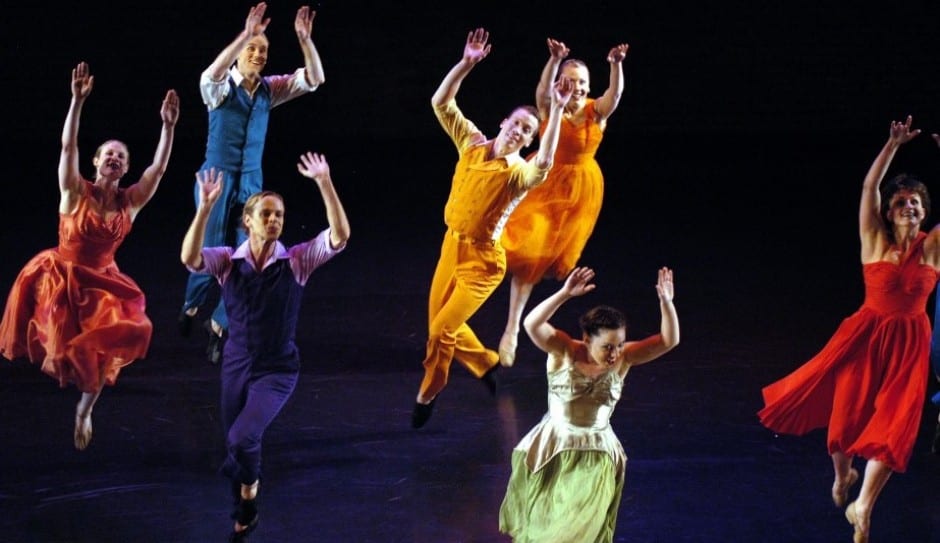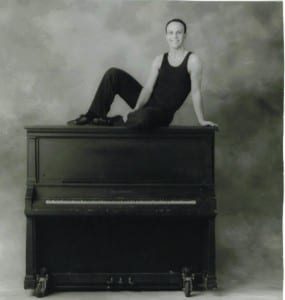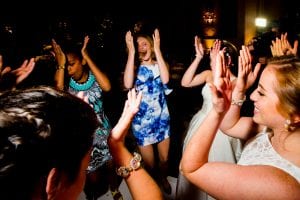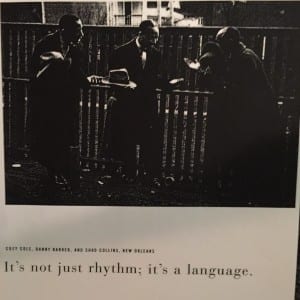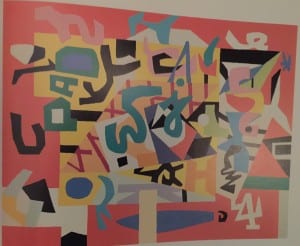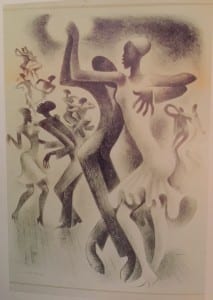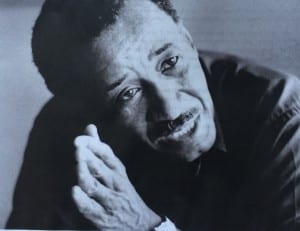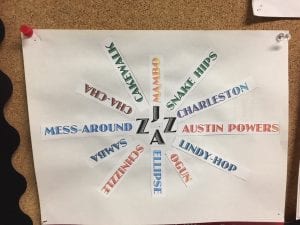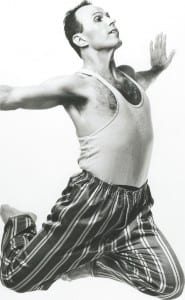 I was a choreographer first and a teacher second. My point of view and abilities as a teacher grew out of information and ideas gleaned from the dances I created. I did quite a lot of teaching before I became a good at it. The structure of my classes evolved gradually. What I explore in them grows out of a personal definition of what jazz dance is. I think this is critically important. One’s methodology should support and be determined by that definition. I built a career saying that jazz dance is dancing to jazz music and I strongly stand by that statement. When I say jazz music, I mean all of it, the many and varied strands that have created one of America’s greatest contributions to world culture. I explore the history of the music and introduce students to the extraordinary men and women who have created this singular, powerful and expressive art form. I design my classes using spirituals, work songs, gospel, blues, ragtime, stride piano, swing, bebop, cool jazz, rhythm and blues, soul and funk as well as music of Afro-Cuban and Latin artists. I love rhythm. The first jazz music I heard was in college – it was Dave Brubeck. It made me want to move. Time and rhythm are all around us. Rhythm is a language. That is my mantra. I am on a never-ending quest for new music and find many great leads on National Public Radio. I then head to iTunes or Spotify. Friends write to me about music they think I would like all the time.
I was a choreographer first and a teacher second. My point of view and abilities as a teacher grew out of information and ideas gleaned from the dances I created. I did quite a lot of teaching before I became a good at it. The structure of my classes evolved gradually. What I explore in them grows out of a personal definition of what jazz dance is. I think this is critically important. One’s methodology should support and be determined by that definition. I built a career saying that jazz dance is dancing to jazz music and I strongly stand by that statement. When I say jazz music, I mean all of it, the many and varied strands that have created one of America’s greatest contributions to world culture. I explore the history of the music and introduce students to the extraordinary men and women who have created this singular, powerful and expressive art form. I design my classes using spirituals, work songs, gospel, blues, ragtime, stride piano, swing, bebop, cool jazz, rhythm and blues, soul and funk as well as music of Afro-Cuban and Latin artists. I love rhythm. The first jazz music I heard was in college – it was Dave Brubeck. It made me want to move. Time and rhythm are all around us. Rhythm is a language. That is my mantra. I am on a never-ending quest for new music and find many great leads on National Public Radio. I then head to iTunes or Spotify. Friends write to me about music they think I would like all the time.
Jazz dance is, without question, a technique. There are things about movement and dancing that you do and learn only in a jazz class. That technique is the basis for the development of a personal style. Jazz dancers, teachers and choreographers take elements of dancing that interest them and put those elements together in a unique and singular way. That was certainly true in my case, incorporating the footwork of tap, the swing of Limon, social dance, classic jazz dances, the vernacular and the science of ballet all melded together by a deep love of music. Teaching at Jacob’s Pillow one summer, Norton Owen, Director of History and Preservation made me aware of Jack Cole.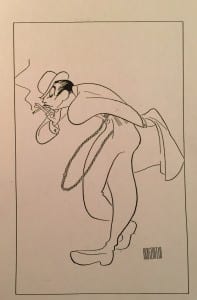 He is considered by many to be “the father of American theatrical dance”. He was inspired to dance after seeing a Denishawn performance and was, for a brief period, one of Ted Shawn’s Men Dancers. Broadway choreographer Ron Field left a bequest to the Pillow, boxes of videotapes with a lot of Cole’s choreography. Norton said I should take a look at the work. I was astonished, seeing countless things I had learned in jazz classes and yet the name Jack Cole had never been mentioned. The generosity of Jacob’s Pillow gave the dance company an opportunity to explore and reconstruct a suite of Cole dances over three summers. Doing the project confirmed my belief about how a jazz style is created. Jack Cole fell in love with the classical Indian dance form Bharatanatyam and melded that technique with his other great passion, Swing music.
He is considered by many to be “the father of American theatrical dance”. He was inspired to dance after seeing a Denishawn performance and was, for a brief period, one of Ted Shawn’s Men Dancers. Broadway choreographer Ron Field left a bequest to the Pillow, boxes of videotapes with a lot of Cole’s choreography. Norton said I should take a look at the work. I was astonished, seeing countless things I had learned in jazz classes and yet the name Jack Cole had never been mentioned. The generosity of Jacob’s Pillow gave the dance company an opportunity to explore and reconstruct a suite of Cole dances over three summers. Doing the project confirmed my belief about how a jazz style is created. Jack Cole fell in love with the classical Indian dance form Bharatanatyam and melded that technique with his other great passion, Swing music.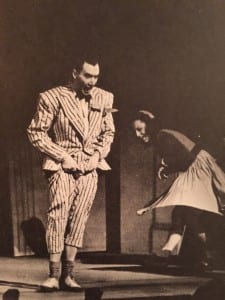
My classes are divided into five parts. I begin with what I call a “Roll Down”, a sequence of movements that define the body’s relationship to the ground. It acknowledges and celebrates gravity. There is an exploration of the back of the body, the back space, the hamstrings, heels and pelvis. There is most often a section that concentrates on the “pulse” or “groove” in relation to the music. I want to see the music alive in the body.
Next is a series of plies in second position. We investigate broken lines, the power of opposition and asymmetry. An important and unique element in jazz class is learning how to healthily negotiate moving quickly from turned out to parallel to turned in positions. The warm-up prepares the dancer to do this. My plie sequences are set and have been for some time. I have tried to change them but always go back to what works. They do seem to work well. What I do change in every class is the music. This gives the students an opportunity to explore how different music feels in the body, something well known combined with something new. Everything that follows the plies changes from class to class.
A “Swing” exercise is next. Swing is that elusive quality that exists between the beats. I never tire of making up new swing exercises. They always remind me of how much I love the Limon classes I have taken over the years. If I had not become a jazz dancer, I would have loved to have been a Limon dancer. Here students experience multiple and complex changes of weight and direction. Moving the feet is an integral part of my classes. I never personally liked jazz warm-ups that had you planted in one spot for half an hour to forty-five minutes or more. I need to move. 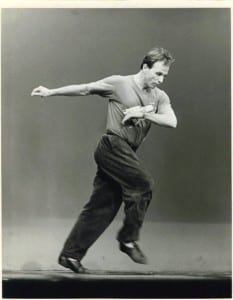
The dancer is then ready to go across the floor. Body isolations are an essential component in jazz dancing. I start with the head, continuing on to the shoulders, ribs and hips. What makes my class unique is that all isolations are done with change of weight. This comes directly from my time in New York studying with Betsy Haug. The dancers move in space as they they do them. I have a big “book of steps”. An important part of jazz dancing is making up steps. Sometimes they even take on the name of the person who made up that step.
There are many steps marked as “Betsy Steps”. These are specifically from Betsy’s Haug’s class. I continue to do many of them and have used many as a foundation to create new ones. A strong sense of the vernacular is evidenced in the names of many steps:
Ski Slope Walk, Up the Barber Pole, Scoop to the Floor, Austin Powers, Pony, Grizzly Bear, Bat Step, Rubies (based on George Balanchine’s ballet of the same name), Hitch-Hike, Bongo Step, Rocky Step, Corkscrew, Grandma’s Dress, Throw a Softball, Windmill Sit Turn, Pump Step, Snake Hips, Popcorn, Stamp Step, Tumble, Camel Walk and Mess Around, to name a few.
The Across the Floor section of class is in two parts. The first series is uptempo and supports exploration of multiple sources of movement in the body . The second is slower with a funkier groove. Repetition is key. Some dancers will find that the style fits their bodies naturally while others will struggle a bit taking more time to feel “at home ” in the aesthetic.
The final part of the class is a combination or better yet, choreography. I have a book of combinations created over the years which are suitable for various levels of dancers. I also teach sections of dances that are part of the repertory of JAZZDANCE. I have taught Points on a Curve, music by Ornette Coleman, Terumasa Hino and Masabumi Kikuchi, On My Way sung by Mahalia Jackson, Song Awakened, sung by Cesaria Evora, The Happy Go Lucky Local, music by Duke Ellington and Bone Matter with music by Walter Paige among others. I still do make up new combinations. This spring (2015), I took on Happy Feet played by the Manhattan Rhythm Kings and created a 1920’s inspired fleet of foot dance for Jazz I. I have also recreated some film dances. One of my favorites is Pick Yourself Up from the movie Swingtime starring Fred Astaire and Ginger Rogers.
I have often described what I try to do with jazz in this way. Jazz music is expressive, expressive of the human condition. I want to make dances that explore those emotions. Sometimes jazz dance looks like a house where all the doors are open and there is sunlight in every room. What I hear in jazz is a house with dark rooms as well as bright ones, some doors are locked with secrets hidden inside, some rooms are humid, some are arid, some are airy and some are dank and musty. I hope that I have created dances with all those feelings and more.
My teaching has improved and developed while at SMU. Teaching, I would say, is my 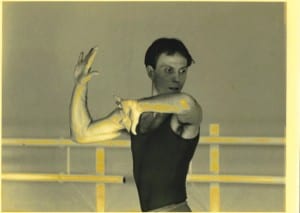 main focus. I have set some JAZZDANCE repertory on the students and created new work as well, but all of it is in the service of introducing young dancers to ideas about classic jazz dance and concert jazz dance. I went through a period of doubt, asking where are they going to use what they are learning in my classes. Where are the concert jazz dance companies where they might get a job? They just don’t exist. I ultimately came to the conclusion that sometimes learning for the sake of learning is reason enough. Most importantly, jazz music and dance are a part of our collective history. It is the history of race in America and if I had my way, would be included in American History classes. The students learn a lot of steps – a lot, a lot about music, a lot about great jazz artists and a lot about our shared history. What could be better?
main focus. I have set some JAZZDANCE repertory on the students and created new work as well, but all of it is in the service of introducing young dancers to ideas about classic jazz dance and concert jazz dance. I went through a period of doubt, asking where are they going to use what they are learning in my classes. Where are the concert jazz dance companies where they might get a job? They just don’t exist. I ultimately came to the conclusion that sometimes learning for the sake of learning is reason enough. Most importantly, jazz music and dance are a part of our collective history. It is the history of race in America and if I had my way, would be included in American History classes. The students learn a lot of steps – a lot, a lot about music, a lot about great jazz artists and a lot about our shared history. What could be better?
Dancing and choreography have been my life’s work, my education about people, the world at large and myself. It has been and continues to be an exciting and extraordinary journey. I share what I have learned on this journey with my students in many ways, hoping that they never let their current goals become their only goals.
A number of students have expressed interest in jazz dance pedagogy and have taken an interest in my teaching for that reason. This past spring 2015 semester, I had a senior, Katie Schaible, come back and ask to take Jazz I again. It was a gift having her there. She wanted to go back and revisit the basic building blocks of what I do. The First Year students were inspired watching Katie work. After four years in the program, she was an articulate and positive force eager to learn. She inspired me as well.
Here are two photos from Katies Schaible’s wedding. She and a group of current and formers students of mine are celebrating by doing the “Call on 8”, a stylized popcorn step that every dance major in the Division knows very well.
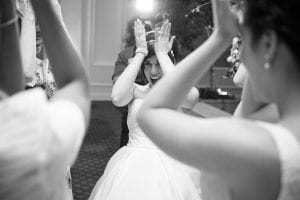
2015 Jun 13: The wedding of Katie Schaible and Michael Dearman in Dallas, TX. Trevor Brown, Jr./Trevor Brown Photography
I have a lot of books about jazz dance and music. One of my favorites is SEEING JAZZ Artists and Writers on Jazz. Robert O’Meally wrote some wonderful essays. This is a small sample.
RHYTHM Examples of rhythm border on the mystical: the first thunders that drummed the world into being, the dance of the spheres and of the sea, the ebb and flow of desire and procreation, the cadence of blood through human veins. Jazz music’s rhythms echo these primal sounds along with those of its origins as an American music owing debts to Europe, Asia, Native American and Africa – especially Africa, where the music’s polyrhythmic character and drum and dance-beat attitudes found their beginnings.
Writers and visual artists who project jazz rhythms into their art express a jazz time-keeper’s base-clef sense of life. The feeling, as Ralph Ellison once put it, that as blues-beset as life may be the real secret is to make life swing, to survive by staying in the groove.
IMPROVISATION The word improvisation derives from the Latin im + provisus, meaning “not provided” or “not foreseen”. In the making of jazz music, improvisation is a definitive hallmark.. Jazz is substantially a performer’s art where any charts or notations are provisional guideposts, notes indicating a work’s general direction but never its finalizes or last word. It is a music in the oral tradition. Jazz’s improvised character is balanced with the fact that it is never a free-for-all; it has both an improvised freshness and a composer/arranger’s sense of completeness and finish. Duke Ellington told his band to play the notes a written but also “to keep some dirt in there, somewhere”.
CALL AND RESPONSE Born in West and Central Africa, where one experiences it in exchanges among singers and instrumentalists, in the U.S. this pattern occurs in church songs and sermons and also in work songs, play songs, blues, rags and in jazz. You say something; I say something back.
Call and response in jazz may consist of a two-part song within the single self – a dialogue between the pianist’s right hand and the left; an instrumentalist/singer’s exchange between the voice and the accompanying box or axe. Jazz call and response also identifies complicated exchanges between between a single voice and other voices: soloist and the chorus of other players; soloist and the congregation of listeners and dancers. These conversations in the language of jazz may be friendly or exhortative in the mode of a preacher and his amening congregation.
In our (post-) modern world , jazz listeners respond to musicians’ calls sent by radio or record (and CD players) (and now iPods, iPads, and iPhones DB). The hearer’s response to jazz may be to think things over yet again; the response may be to push back the furniture and dance or to turn the lights down low and have a very private party. Like jazz improvisors who transform every composition they play, listeners add their own sweet or bitter notes to the music and make it their own.
THE BLUES
I have collected a lot of wonderful writings about The Blues. Here is a sampling.
The blues aesthetic is an approach to life and creative endeavors that claims affirmation in the face of adversity and brings meaning, power and a sense of community to African Americans in a way that is accessible to, and expressive of, a more universal audience. It transforms difficulty and negativity into beauty as one maneuvers through and around life’s obstacles. (I can’t remember where I found this.)
Albert Murray calls the Blues “a highly pragmatic and indeed a fundamental device for confrontation, improvisation and existential affirmation: a strategy for acknowledging the fact that life is a lowdown dirty shame and for improvising or riffing on the exigencies of the predicament.”
Albert Murray was a cultural theorist. In all of his writing, jazz music – derived from the blues idiom of African Americans – was at the heart of his creative output. One of my favorite books of his is called Stomping the Blues (1976). It has influenced me profoundly and was at my side when I created the Sidney Bechet work Blue on the Moon.
One of my favorite quotes is …… “We invented the blues; the Europeans invented psychoanalysis. You invent what you need.” – interview in American Heritage, September 1996
Ronne Aul – Blues dancer ( a member of New Dance Group) said, “The blues, for me, is a folk expression, and it has no time. It doesn’t get old or it doesn’t get old. It’s just a way of black people expressing themselves in a poetic sense. I feel it is very important to continue and as I grow older, the meaning of the blues is much greater to me as a person.”
These are some important words that help define my teaching of classic jazz dance.
